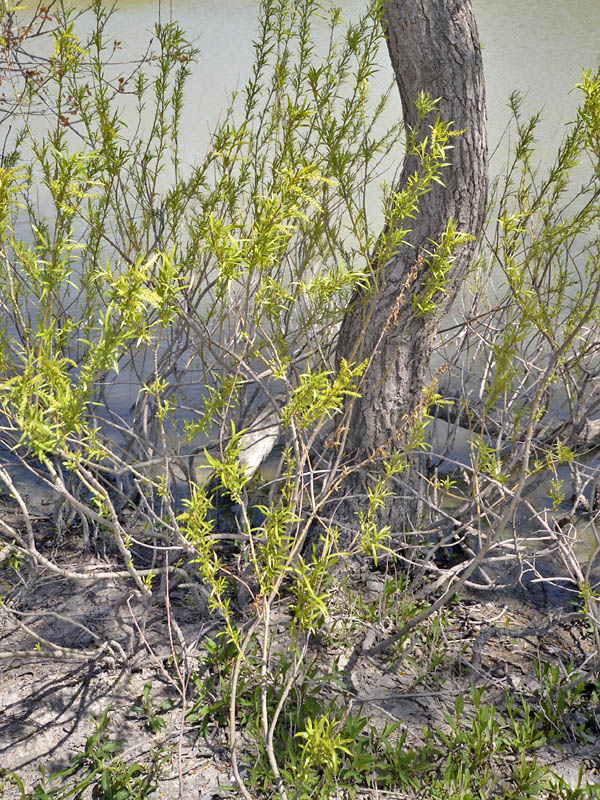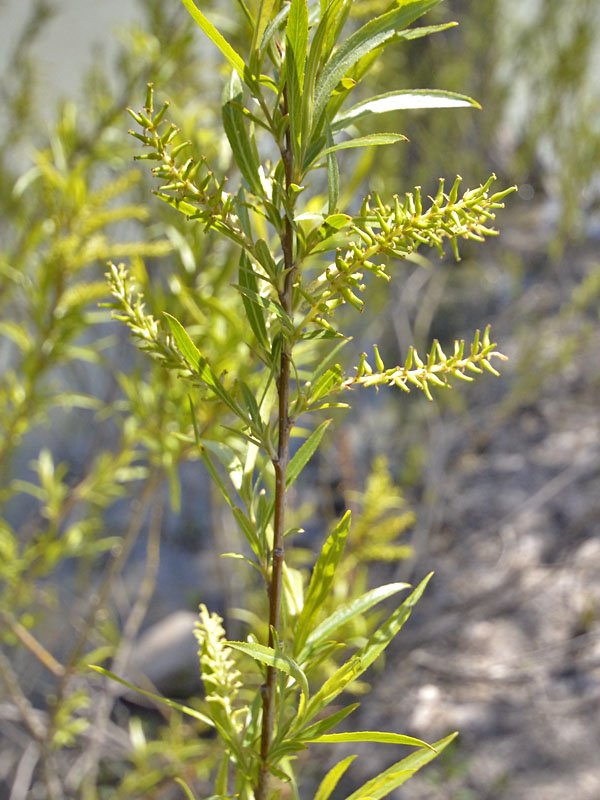
Woody > Salix > Salix petiolaris > Salix petiolaris
Salix petiolaris
Slender or Meadow Willow
Origin: Native to eastern North America.
Mike's
Opinion


"
Salix petiolaris resembles a small tree or large shrub and because of this odd shape it is sometimes difficult to place in the right location in the landscape. Often times Salix petiolaris will be pruned to look like a shrub but without any pruning this plant can become very unkempt and may distract from the rest of the garden.
Michael Pascoe, NDP., ODH., CLT., MSc. (Plant Conservation)
"
| Family |
| Salicaceae |
| Genus |
| Salix |
| Species |
| petiolaris |
| Category |
| Woody |
| Type |
| Tree (deciduous), Shrub (deciduous) |
| USDA Hardiness Zone |
| 8b |
| Canadian Hardiness Zone |
| 3a |
| Temperature (°C) |
| -23-(-26) |
| Temperature (°F) |
| -10 - (-15) |
| Height |
| 3 m |
| Spread |
| up to 3 m |
Photographs
Description and Growing Information
Flowering Period
| General Description |
| A native tree that is fast growing with a somewhat weedy appearance. |
| Cultivation |
| Does not tolerate high alkaline soil but will withstand poor soils and will tolerate dry soils once established. |
| Shape |
| Salix petiolaris is a medium sized shrub with ascending branches that are often clumped together. |
| Growth |
| Fast |
| ID Characteristic |
| Alternate, simple leaves, silky abaxial, green and smooth adaxial with yellow petioles. |
| Pests |
| The Japanese beetle is a common pest as is powdery mildew, neither of which seem fatal. |
| Habitat |
| Commonly found in damp wet habitats, meadows and swamps but has also been found in dry upland sites such as Jack Pine woods in Southern Ontario, Canada. |
| Bark/Stem Description |
| The bark on young growth is greyish-green or reddish-brown and smooth becoming dark brown-black with age. |
| Flower/Leaf Bud Description |
| The 2 black bud scales are densely pubescent, similar to Magnoila x soulangiana, buds are 5-7 mm in length. |
| Leaf Description |
| Alternate and simple, young leaves are pubescent with reddish tinge from the coloured hairs. The leaf blade is a linear lanceolate shape and is 2.7 cm long to 2.5 cm wide. |
| Flower Description |
| The catkins shrub are somewhat elliptical, 1-2 cm, the filaments slightly pubescent near the base while the pistols are densely hairy. |
| Colour Description |
| Young bark is reddish-brown to dark-brown, turning olive-brown as it matures. Catkins are white-olive-green while dense growing shrubs may appear yellowish inside colour due to the number and colour of the petioles. |
| Texture Description |
| Salix petiolaris is a fine to medium textured plant. |
| Propagation |
| Salix petioralis can be propagated from woody stem, soft wood and semi hardwood cuttings with or without rooting hormone. Seeding and layering can also be used. |
References
Petrides, George A. "A Field Guide to Trees and Shrubs; Field Marks of All Trees, Shrubs, and Woody Vines That Grow Wild in the Northeastern and North-central United States and in Southeastern and South-central Canada". Boston: Houghton Mifflin, 1972. Print.
Soper, James H., and Margaret L. Heimburger. "Shrubs of Ontario". Toronto: ROM, 1982. Print.

